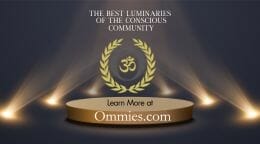Attachment, Loss, and the Liberation of Nonattachment

Nonattachment is perhaps the least understood of all the Eastern spiritual concepts. Some confuse it with unattachment or detachment.
The Liberation of Nonattachment
by Clare Goldsberry
I once read that all fear is rooted in the fear of loss. We all feel a sense of loss when someone or something we love disappears from our life. The loss of a loved one—especially in death—leaves us feeling sad, lonely, and often fearful of what life holds now that the person is gone. Natural disasters often cause the loss of our material possessions, which can also leave us feeling empty and afraid as we ponder how to pick up the pieces and take the next step. Our material existence is often grounded in the things and people we are attached to, and the loss we feel is a very human characteristic. How can we overcome this fear and all the emotions that grip us when loss occurs, especially to death?
From a Buddhist standpoint, the practice of nonattachment is key to the acceptance of loss and dealing with emotions that come with it. Nonattachment is perhaps the least understood of all the Eastern spiritual concepts. Some confuse it with unattachment or detachment, but they are not quite the same thing. To be unattached or detached is to have had no connection at all, to break away from completely, or to have something broken away. By contrast, nonattachment indicates that a connection exists, but that one has made a choice to not attach oneself to the people or things involved.
According to Mahayana Buddhism, nonattachment is a mental factor that opposes attachment; it remedies a state of mind that has been brought on by mistaken appearances. These happen when we believe that the things we see, hear, and touch are inherently real. Attachment to the things we see brings on feelings of desire that bind us to samsara. Nonattachment liberates us from these mistaken appearances.
Many of us feel trapped in our lives; we feel as if we have no freedom or that we are controlled by external circumstances. Attachment permeates our lives. Many believe that people who practice nonattachment are cold, remote, distant, unemotional, and uncaring. Nothing could be farther from the truth. Nonattachment creates a greater sense of caring, a greater compassion, by removing the emotions of the ego from the equation. We become attached to people and things because there is an element of the “I” or self-grasping in the attachment. When “I” or “me” or “my” enters the picture, we are attached, because it is suddenly about “me.” That attachment creates the delusion that there is some inherent, solid reality or permanence to the person or thing, or that we can control the outcome of an event. That attachment is the root of suffering.
Nonattachment provides us with the freedom to be loving, caring, and compassionate without regard to the “I,” “me,” or “my” feelings, wants, desires, hopes, or outcomes. We can be entirely compassionate without being pulled into the drama. We must realize that each person is operating within the framework of his or her own karma. Karmic seeds planted in the mental continuum, or the monad, over many lifetimes since beginningless time, ripen at various stages and in various lifetimes.
That is why, while I feel compassion toward all sentient beings and try my best to help them—to feed the hungry, to help the sick, visit the lonely, and lift the sad—I cannot save them from the implications of their karma. Therefore, I must not become attached to happiness or to sadness. We must be in control of our mind and train it so that we do what we do with the right intention. If we enter into action with an eye on results, or with wrong intention, we will not be free to act in the best interest of others—and that is the ultimate reason to act. Attachment to results distracts us from acting in the optimum manner to act on behalf of all sentient beings.
Nonattachment also allows us to be “open to success or failure.” Not all of our actions will be successful, and everyone in this samsaric existence experiences failure. But as long as we are not focused on results, we can act with equanimity.
Nonattachment does not excuse us from our duty or from performing right action. We can perform right action, but if we do not understand why we are performing that action, our action might be of no avail.
Understanding this truth brings us freedom. Attachment to outcomes limits us to the outcome we have defined as acceptable. Any outcome beyond what we have determined to be the only acceptable one leaves us unhappy, disappointed, and unable to experience spiritual growth from the situation.
Nonattachment is love.
Love and attachment are often confused which is why we suffer so deeply with the loss of someone we love. We feel it so deeply because of our attachment to the person and the feelings we have about the person. Death causes us to experience deep sorrow because we are now denied the feelings that gave us so much pleasure and satisfaction.
Pure love—unconditional love – is unmixed with attachment and stems entirely from a concern for others’ happiness. This pure love, or unconditional love, which is really a true compassion, results in peace and happiness or both us and others. When we love without attachment, we truly love. We can then give our loved ones the space to be who they are and walk the path they are meant to walk. We can even allow them to die at their appointed time without inserting our own wants and needs into the picture.
Click HERE to Connect with your Daily Horoscope on OMTimes!
Visit Our Astrology Store for Personalized Reports
About the Author
Phoenix-based author and practicing Buddhist, Clare Goldsberry wrote The Illusion of Life and Death: Mind, Consciousness, and Eternal Being after her partner Brent’s illness and death, and share the beautiful way he embraced his cancer as an “adventure” —with the hope of helping people understand what having a good death means: a death without fear of the unknown – to trust the path of passing – that makes living so much more enjoyable. For more information on Clare Goldsberry and her work, visit: ClareGoldsberry.com
Excerpted from The Illusion of Life and Death: Mind, Consciousness, and Eternal Being by Clare Goldsberry (November 2021). Used with permission from Monkfish Book Publishing Company.
OMTimes is the first and only Spiritually Conscious Magazine. Follow Us On Facebook, Twitter, Instagram, Linkedin, Pinterest, and Youtube
OMTimes Magazine is one of the leading on-line content providers of positivity, wellness and personal empowerment. OMTimes Magazine - Co-Creating a More Conscious Reality







